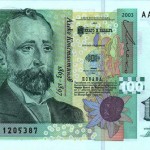 Yesterday’s trade (in GMT terms) saw USD/CAD within the range of 1.2988-1.3049. The pair closed at 1.3011, inching up 0.05% compared to Fridays close. It has been the 172nd gain in the past 326 trading days and also a second consecutive one. The daily high has been a level unseen since August 11th, when a high of 1.3081 was registered. The major pair has pared its slump to 0.13% so far during the current month, following a 0.80% gain in July.
Yesterday’s trade (in GMT terms) saw USD/CAD within the range of 1.2988-1.3049. The pair closed at 1.3011, inching up 0.05% compared to Fridays close. It has been the 172nd gain in the past 326 trading days and also a second consecutive one. The daily high has been a level unseen since August 11th, when a high of 1.3081 was registered. The major pair has pared its slump to 0.13% so far during the current month, following a 0.80% gain in July.
At 8:20 GMT today USD/CAD was edging up 0.22% on the day to trade at 1.3039. The pair touched a daily high at 1.3046 during early European trade, overshooting the upper range breakout level (R4), and a daily low at 1.3010 during the early phase of the Asian trading session.
Meanwhile, crude oil futures marked their 96th drop out of the past 181 trading days on August 29th. Oil for October delivery went down as low as $46.62 per barrel and closed at $46.98, losing 1.39% compared to Friday’s close. As of 8:15 GMT today the commodity was retreating 0.62% to trade at $47.27, after going down as low as $46.94 per barrel earlier. Crude oil prices and CAD valuation tend to be strongly positively correlated.
On Tuesday USD/CAD trading may be influenced by the following macroeconomic reports as listed below.
Fundamentals
United States
S&P Case-Shiller Home Price Index
At 13:00 GMT Standard & Poor’s/Case-Schiller will report on the performance of their House Price Index, which measures the change in values of single-family homes in 20 metropolitan areas across the United States. The report serves as a gauge of the US housing market’s health. According to the median estimate by experts, home prices in the 20 areas probably rose 5.2% in June compared to June 2015, while matching the rate in May. It has been the lowest annual increase since September 2015. In May, home values in Portland recorded the highest annual increase (up 12.5%), followed by Seattle (up 10.7%) and Denver (up 9.5%). Within a recovering economy, a sharper-than-projected gain in prices will usually have a limited-to-moderate bullish effect on the local currency.
Consumer Confidence Index by the CB
Confidence among consumers in the United States probably lowered in August, with the corresponding index coming in at a reading of 97.0, according to market expectations. In July the gauge was reported at 97.3, while outstripping the median estimate of 95.9.
This indicator measures the level of individuals’ confidence in the US economic development. It is considered as a leading indicator, as it gives an early insight into consumer spending, which accounts for a major part of the nation’s GDP.
In case the index slowed down more than anticipated, this would have a strong bearish effect on the US dollar, as lower confidence suggests a lesser willingness to spend and, respectively, a slower economic growth. The Conference Board research group is to publish the official index reading at 14:00 GMT.
Canada
Producer Prices
Prices of industrial products in Canada probably edged down at a monthly rate of 0.1% in July, according to market expectations. In June prices were up 0.6%, which has marked the second consecutive month of increase. In annual terms, prices went down 0.8% in June to mark a fifth consecutive period of decline.
This index measures the change in prices of industrial goods, sold by manufacturers in the country. It is also used as an indicator of commodity inflation. In case a larger-than-anticipated drop in prices is reported, this would have a limited bearish effect on the local dollar, as the latter tends to be sensitive to changes in commodity prices. Statistics Canada is to release the official data at 12:30 GMT.
Bond Yield Spread
The yield on Canada’s 2-year government bonds went as high as 0.610% on August 29th, matching the high from Friday, while also being the highest level since July 29th (0.611%), after which it closed at 0.589% to lose 1.8 basis points (0.018 percentage point) compared to August 26th.
Meanwhile, the yield on US 2-year government bonds climbed as high as 0.853% on August 29th, or the highest level since June 3rd (0.899%), after which it fell to 0.817% at the close to lose 2.8 basis points (0.028 percentage point) compared to August 26th.
The spread between 2-year US and 2-year Canadian bond yields, which reflects the flow of funds in a short term, narrowed to 0.228% on August 29th from 0.238% on August 26th. The August 29th yield spread has been the lowest one since August 25th, when the difference was 0.201%.
Daily, Weekly and Monthly Pivot Levels
By employing the Camarilla calculation method, the daily levels of importance for USD/CAD are presented as follows:
R1 – 1.3017
R2 – 1.3022
R3 (Range Resistance – Sell) – 1.3028
R4 (Long Breakout) – 1.3045
R5 (Breakout Target 1) – 1.3064
R6 (Breakout Target 2) – 1.3072
S1 – 1.3005
S2 – 1.3000
S3 (Range Support – Buy) – 1.2994
S4 (Short Breakout) – 1.2977
S5 (Breakout Target 1) – 1.2958
S6 (Breakout Target 2) – 1.2950
By using the traditional method of calculation, the weekly levels of importance for USD/CAD are presented as follows:
Central Pivot Point – 1.2950
R1 – 1.3068
R2 – 1.3132
R3 – 1.3250
R4 – 1.3369
S1 – 1.2886
S2 – 1.2768
S3 – 1.2704
S4 – 1.2641
In monthly terms, for USD/CAD we have the following pivots:
Central Pivot Point – 1.3038
R1 – 1.3244
R2 – 1.3460
R3 – 1.3666
R4 – 1.3872
S1 – 1.2822
S2 – 1.2616
S3 – 1.2400
S4 – 1.2184





